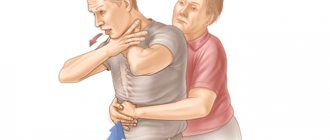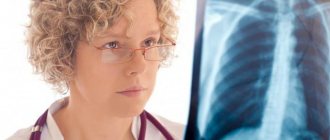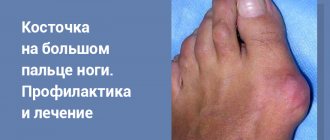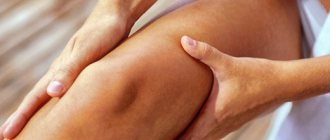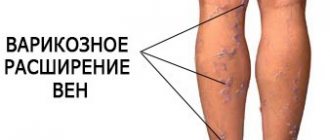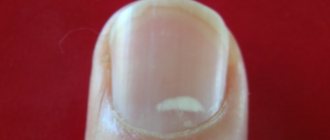Hello, friends!
How often do you notice that your legs are giving you trouble? If you are sure that it is because you are tired or stressed from being on your feet all day, then I advise you to take a very serious look at these symptoms. Aching legs below the knees, the causes of which can be different, require careful analysis. This is necessary in order to begin treatment of the disease on time and not make it chronic.
Description
Aches are unpleasant sensations that are localized in the bones, joints and muscles. A person is in constant discomfort, which affects the quality of his life. So, aching legs is one of the types of pain that the human body perceives somewhat differently. In this case, sensations of squeezing, stretching and twisting of tissues occur. This phenomenon is usually associated with a cold or intoxication, but the temperature should rise. But depending on the location and time of manifestation of the disease, the causes may be different.
Phlebitis
Another pathology that provokes pain in the legs is also associated with blood vessels - phlebitis, or inflammation of the venous vessels. Phlebitis occurs anywhere, but most often in the legs, since it is varicose veins of the lower extremities that are the main prerequisite for the development of phlebitis. If the disease progresses and is complicated by the formation of blood clots, then this pathology is called thrombophlebitis.
The consequences of phlebitis can cause death
The danger of the pathology primarily lies in the fact that thrombophlebitis can provoke the detachment of blood clots and their introduction into the pulmonary artery. This usually happens with phlebitis of deep vessels. In every third patient, this complication ends in death.
Varicose veins are the main prerequisite for the development of phlebitis. Also, inflammation of the veins can be caused by the following reasons:
What to do if your leg ligaments hurt
- infection by pathogenic microorganisms;
- mechanical damage to the walls of venous vessels (puncture, chemical burn);
- an allergic reaction to taking certain medications or the ingestion of food allergens;
- prolonged stagnation of blood in the lower extremities, for example, due to a sedentary lifestyle of pregnant women;
- immobilization of a limb for a long time as a result of a fracture or dislocation.
Phlebitis can occur acutely or chronically. In acute phlebitis, pain along the inflamed vessel appears suddenly, patients feel weak, the body temperature may rise, the legs become hot, and a red line stretches along the vessel. There is a constant feeling of tension in the legs, the skin becomes denser in places, and the limb becomes very plump.
REFERENCE. Typically, acute phlebitis occurs in the superficial veins and is a complication after injection.
Chronic phlebitis develops gradually. According to the nature of the pain, the legs ache more than they hurt sharply, but such sensations often change their intensity depending on the period of manifestation - the limbs will begin to ache if the provoking factor is activated.
In most cases, phlebitis proceeds sluggishly, but provokes constant weakness, reluctance to move, and fatigue in the patient. The reason why your legs hurt and you feel weak must be found out from your doctor in order to begin treatment.
Therapy for patients can be organized both on an outpatient basis and on an inpatient basis. The sore limb should be given rest and elevated on a pillow. Treatment at the initial stage is conservative:
- antibacterial drugs – Augmentin, Amoxicillin, Penicillin, Doxycycline;
- non-steroidal anti-inflammatory drugs, for example, Dicloberl. Ketoprofen, Ibuprofen:
- local preparations - you need to smear your feet with Heparin ointment, Venobene, Dolobene, Troxerutin, Thrombophob;
- means for improving blood circulation - Trental, Actovegin, Solcoseryl, Pentoxifylline;
- drugs that control blood viscosity - Cardiomagnyl, Aspecard, Aspirin;
- drugs that reduce the ability to form blood clots - Dicoumarin, Phenylan;
- antihistamines - Suprastin, Cetrin, Pipolfen.
The selection of drugs is carried out individually for each patient, the therapeutic dosage depends on the severity of the symptoms of the pathology. Since many of these drugs have a wide list of contraindications and cannot be prescribed without a preliminary examination of the patient.
Causes of the disease
Pain in the legs can have different causes, and additional symptoms are observed:
- Lack of microelements in the body as a result of diet or disruption of the gastrointestinal tract. My legs get tired quickly, they twist and cramp.
- Physical fatigue, staying in one position for a long time, playing sports.
- Long-term use of glucocorticoids, diuretics, and those that lower cholesterol.
- Injury to limbs.
- The presence of an inflammatory process in the muscles of the lower extremities, in which not only aches in the legs appear (we discuss the causes and treatment in this material), but also redness, rash and age spots.
- Pathologies of the blood vessels of the legs: development of atherosclerosis, thrombosis, varicose veins, osteoporosis, vasculitis or periarteritis nodosa, lymphostasis. In this case, a rash, redness of the skin, bruises, spider veins, pigment spots, and a burning sensation may be observed.
- The occurrence of osteomyelitis in children, arthrosis or arthritis in adults.
- Pathologies of nerve fibers in diabetes mellitus (polyneuropathy), osteochondrosis or intervertebral hernia, as well as in smokers and alcoholics. In this case, there is aching in the arms and legs, redness of the skin, the formation of dents, etc.
- Rheumatic lesions of tissues, their compression or convulsions.
- The presence of benign or malignant tumors, Paget's disease.
- The appearance of allergic reactions, accompanied by rash, burning and redness.
Pathological causes
There are many diseases that cause leg pain. The severity of pain can vary greatly, from severe attacks to mild tingling and numbness in the legs. Such symptoms may be associated with pathological processes in the muscles, ligaments, joints, nerves or blood vessels. Knowing the main signs of each disease, you can recognize the problem in time and contact a specialist for detailed advice.
Possible causes of leg pain:
- venous insufficiency;
- vascular atherosclerosis;
- damage to peripheral nerves;
- diseases of the spine;
- joint diseases;
- bone damage;
- muscle pathology;
- systemic diseases;
- flat feet;
- injuries.
Let's take a closer look at each of the causes of pain in the legs.
Venous insufficiency
Vein diseases are at the top of the list of causes that can cause pain and discomfort in the legs. We are talking about varicose veins of the lower extremities. In this condition, normal blood flow is disrupted, followed by severe pain in the legs. If the disease is not treated, it can become severe, even leading to the development of thrombophlebitis. The most dangerous complication of varicose veins is considered to be pulmonary embolism - a deadly condition in which the blood vessels of the lungs are blocked by a detached blood clot.
Varicose veins affect the veins in the lower leg and thigh. The disease develops gradually over many years. Middle-aged women are more often affected. Characterized by aching pain in the legs, intensifying in the evening. If your legs tingle after a long walk and visibly swell, this may also be one of the manifestations of venous insufficiency.
Advice
If severe swelling of the lower leg occurs, call an ambulance immediately.
Vascular atherosclerosis
Arterial disease is another cause of discomfort in the lower extremities. In the case of atherosclerosis, the legs buzz and ache quite strongly, which ultimately becomes a reason for a visit to the doctor. Unpleasant sensations can be localized in the thigh or lower leg area on one or both sides. Convulsions may occur. A characteristic symptom of atherosclerosis is a constant feeling of cold in the feet, regardless of the weather.
Nerve damage
If pain in the leg occurs from time to time in the form of short attacks and goes away spontaneously, the cause should be sought in diseases of the nervous system. In particular, shooting unilateral pain in the hip area may be associated with pinching of the sciatic nerve. The problem often occurs in pregnant women, as well as in people suffering from osteochondrosis.
Spinal diseases
Osteochondrosis of the lumbar spine itself can cause discomfort. Aching pain in the legs can spread over the entire surface of the lower limb, radiating to the thigh, lower leg or knee. At the same time, there may not be any unpleasant sensations directly at the site of the disease, which greatly complicates the diagnosis. The attack is well relieved by intramuscular administration of anti-inflammatory drugs.
Joint diseases
Aching legs may be a sign of damage to one of the joints of the lower extremities. With inflammation of the hip joint, all sensations will be localized in the thigh area, while aching pain in the knee may indicate the development of gonarthrosis. If your feet buzz and ache when walking, the small joints of the foot may be affected. Pain around the joints can also be associated with microtrauma of the tendons and adjacent tissue.
Bone damage
Osteomyelitis is a serious purulent disease of bone tissue. With this pathology, sudden and very severe pain occurs in the legs. The disease often occurs after fractures or ordinary bruises, when the integrity of the skin is damaged. Characterized by a noticeable deterioration in general condition and high body temperature. Without adequate treatment, osteomyelitis can lead to disability or death.
Muscle pathology
Inflammation of the muscles surrounding bones and joints is called myositis. The problem often occurs after an infectious disease. With myositis, the legs hurt and ache very much. Unpleasant sensations intensify when walking and any active movements, after which they usually subside. Characterized by a noticeable limitation of movements up to complete immobility.
Systemic connective tissue diseases
Autoimmune damage to joints and muscles is another possible cause of leg pain. Such diseases are often inherited. With any autoimmune pathology, the body’s own cells are destroyed by active antibodies, which leads to the appearance of all the symptoms of the disease. Characterized by a long course of the disease with episodes of exacerbation and remission. With adequate therapy, the patient can lead a normal lifestyle without restrictions.
Flat feet
Changes in the arch of the foot (longitudinal or transverse) deserve special attention. The disease develops in childhood and causes a lot of anxiety for the child and his parents. With flat feet, the legs ache quite severely, so that any movement becomes difficult. To treat the disease, massage and therapeutic exercises are used. Wearing special orthopedic shoes has a good effect. In some cases, surgical correction of the pathology is possible.
Injuries
What to do if pain in your legs appears after a bruise, fall or blow? In this case, there is no need to look for other causes of unpleasant sensations. Any injury, even one suffered in the distant past, can cause severe or moderate pain. If the damage is serious enough, you should go to the emergency room.
Physical inactivity
A sedentary lifestyle, sedentary or standing work can cause impaired blood flow in the lower extremities. Brief convulsions may occur. If your leg hurts after being in one position for a long time, you need to change the type of activity more often. Walking, gymnastics or massage will help relieve the condition.
Caution - danger!
Doctors identify several dangerous diseases that cause severe aching in the legs. Therefore, it is necessary to immediately consult a doctor to make an accurate diagnosis and prescribe effective treatment, since the consequences can be very serious, including amputation of limbs. Such diseases include:
- Varicose veins, which manifests itself in the form of dilated veins, swelling of the legs, heaviness, monotonous pain, and cramps. If the disease is advanced, then bruises on the skin, burning, etc. appear.
- Vascular thrombosis (venous or arterial), which tends to develop rapidly. In this case, it is recommended to immediately consult a specialist, since necrosis and gangrene may begin after four days. The disease is accompanied by swelling and redness of the extremities, the appearance of age spots, and aching in the legs. Arterial thrombosis develops over several hours and is characterized by pain, pallor and numbness of the legs; gangrene can develop after four hours.
- Atherosclerosis, which is characterized by the appearance of constant pain, dents and bruises on the skin of the extremities, and the formation of a rash. If the disease is not treated in time, necrosis and gangrene will form, which will lead to amputation of the legs.
Why do my feet hurt?
If we consider pain in the feet, then the main causes of their occurrence can be identified as varicose veins, osteoporosis, plantar fasciitis, obliterating endarteritis, flat feet, diabetes and other diseases.
Every person has a suspended fascia in their foot. This is a plate of connective tissue that runs along the entire surface of the sole. The role of this plate is that it strengthens the foot. But if the fascia is exposed to constant overload, it can become inflamed and injured. Pain in the feet due to plantar fasciitis in most cases occurs in those people who have congenital weakness of connective tissue. Pain during the development of this disease occurs on the instep and in the lateral part of the foot. However, they can intensify after heavy exertion or long walking.
Such a common cause of pain in the legs as flat feet occurs due to insufficient or excessive load on the feet, incorrect heredity, excess weight or the use of uncomfortable shoes. This pathology can develop against the background of diseases such as polio and diabetes. The essence of the disease comes down to the fact that the ligamentous-muscular mechanism of the foot ceases to fully function. Because flat feet cause the joints of the foot to be out of alignment, additional stress is placed on the other joints of the legs, the spine, and the base of the skull. The result of such processes can be pinched nerve roots. This, in turn, can lead to the development of serious pathologies of the musculoskeletal system.
As you can see, pain in the lower back and legs can have completely different causes. Therefore, at the first sign of discomfort, you should visit a doctor.
Diagnostics
If pain appears regardless of physical activity, consultation with a specialist is necessary. To do this, first of all, you need to contact your family doctor, who, after conducting research, will give a referral to a specialist (endocrinologist, surgeon, neurologist or traumatologist).
When patients complain of aches and pain in the lower extremities, the doctor must conduct an analysis of clinical data, the results of which will determine the action plan for establishing a diagnosis and prescribing treatment. For this purpose, laboratory diagnostic methods are used. The patient must take blood tests (general, biochemical, water-electrolyte, glucose). Then a microbiological examination, serological analysis and fluoroscopy are carried out. If cancer, tuberculosis or osteomyelitis is suspected, tumor markers, needle biopsy or bone biopsy are used. The doctor may also prescribe ultrasound, MRI and CT, vascular angiography and rheovasography of the leg arteries, LID and skeletal scintigraphy. Thus, if a person is bothered by aching legs at night, accompanied by various additional symptoms, it is necessary to undergo a medical examination to make an accurate diagnosis and only then begin treatment prescribed by a specialist.
Aching legs are more common in children than adults
Most parents have had to deal with a situation where their child’s legs hurt. Painful sensations bother the baby and prevent him from falling asleep, causing crying and irritation. This condition can be caused by increased stress on the legs when the child is too active, as well as hypothermia or uncomfortable shoes. In addition, the cause of such manifestations may be the so-called “growing pains”. The fact is that the feet of children from 6 to 12 years old increase in size quite quickly, which often leads to impaired blood supply in the lower extremities. For this reason, aches and pain in the legs may occur more often in children than in adults. For these conditions, the child can be helped by a light relaxing massage and warming ointment. But if pain occurs regularly and causes difficulty walking, you should immediately seek professional help. Such symptoms may be a sign of various pathologies of the musculoskeletal system.
Treatment
Treatment methods depend on the reasons that caused the aches in the limbs. Therapy is carried out based on the results of the examination and diagnosis. If a person has vascular pathologies, he is recommended to exercise (walking, swimming, etc.) to prevent the appearance of varicose veins, fatty foods and alcohol should be excluded from the diet, prolonged stress on the lower extremities, overwork, and hypothermia should be avoided. For pathologies of the spine and joints, it is recommended to treat the underlying diseases. Doctors often prescribe antidepressants to relieve tension, anti-inflammatory drugs, and steroids. Massage, gymnastics, acupuncture, etc. help relieve discomfort. Thus, treatment of aching legs is carried out in accordance with the underlying ailment. It cannot be treated as a separate symptom; the main therapy comes down to three parameters:
- Taking medications that are aimed at eliminating the cause of the disease. The patient is prescribed the necessary medications, as well as vitamins, microelements and anti-inflammatory drugs. These could be, for example, Actovegin, Cavinton, Ibuprofen and others.
- Physiotherapy, which also includes massage, therapeutic exercises, weight control.
- Surgical intervention. It is carried out in emergency and advanced cases of the disease.
When a doctor's help is needed
Leg pain must be properly differentiated in order to understand what level of assistance is needed when leg discomfort occurs. If severe pain occurs, if a person cannot transfer body weight to the leg and lean on the limb, it is necessary to immediately call an ambulance and consult a doctor. You can find out which doctor you should see for knee pain here.
Emergency care is also resorted to if the leg has a traumatic injury to soft tissues - a cut or an open fracture, and also if, after an injury to the lower limb, symptoms such as swelling, hematoma, loss of sensation below, sharp redness of the limb, local hyperthermia rapidly begin to develop. . A doctor's consultation will also be needed if a click was heard during an injury - it is quite possible that there is joint displacement.
If these signs are absent, then after the pain in the leg appears, you need to get home and leave the limb alone, placing a cushion under the leg. It is necessary to see a doctor on the same day or the next if:
- there are signs of soft tissue infection - the leg is red, hot to the touch, painful when touched;
- after some time, severe swelling appeared and the leg increased significantly in size, the skin became pale, cold, and cramps appeared;
- swelling has spread to both legs, and there are problems with breathing and blood circulation (increased heart rate, cold hands);
- when pain appears in the legs, which occurs for no apparent reason.
It is recommended to consult a doctor as soon as possible if the following symptoms appear:
- nagging pain in the legs appeared after or while walking;
- if swelling in the lower extremities begins to appear frequently;
- if the pain in the legs tends to intensify;
- if a vascular pattern appears on the leg.
The above are signs that require examination by a doctor and further treatment. But do not forget that your feet do not forgive neglect of your health. Therefore, even in the absence of direct indications for medical consultation, you should not wear high heels or narrow shoes, test your feet by standing for a long time or wearing wet shoes in bad weather. All this can ultimately lead to limb pathologies.
ethnoscience
Of course, as mentioned above, treatment should be carried out by an experienced specialist. At home, you can use traditional methods if aching legs arise from physical activity. So, when your feet get tired, traditional medicine recommends cutting seven large onions into a large container (basin) and stomping on them for about twenty minutes, after which you rinse your feet with water and rub in vegetable oil, massaging. Such procedures must be carried out twice a week.
Some people recommend making dandelion compresses. They pound it and apply the resulting pulp to the limbs, wrapping them with a bandage or gauze bandage. You can rub castor oil on your feet at night instead. It is also effective to use a mixture of herbs such as St. John's wort, bearberry, immortelle, carrot seeds, cherry stalks, and birch leaves for aches. One spoon of the composition is poured with boiling water and left overnight in a thermos. Drink the infusion one tablespoon three times a day.
Pain Relief Techniques
One of the most common and effective methods of combating pain in the legs is proper massage. Proper foot massage after a hard day will have a beneficial effect on muscles, blood vessels and sweat glands, as well as improve blood circulation and speed up metabolic processes. When trying to understand the topic: “Pain in the leg muscles: causes,” it is worth understanding that good blood flow is one of the foundations for the health of both joints and muscles. In this case, it is necessary to take into account the fact that for those people who have been diagnosed with edema, varicose veins and skin diseases, night massage is contraindicated.
Foot pain, which is often caused by poor blood flow and muscle strain, can also be relieved with massage.
Another way to get your feet in order is to use contrasting temperatures. To do this, you need to take two containers with a volume of 6-7 liters and fill one of them with moderately hot water (40 degrees), and the other with cold water (15 degrees). Next, you need to lower both legs alternately into cool and warm water. This procedure should be repeated several times. Finally, you need to thoroughly rub your feet and leg muscles with a towel.
As a result, we can conclude that in the vast majority of cases, leg pain is a signal of another disease. This means that you should not get carried away with self-medication. Instead, it is better to undergo diagnostics in a modern clinic, which will reveal the essence of the problem.
Complications
If the disease is not diagnosed in a timely manner and the appropriate treatment is not completed, the disease may progress and negative consequences may appear. One of the dangerous complications is gangrene due to pathology of the veins and arteries, which threatens limb amputation. If thrombosis is observed, it must be treated, since there is a risk of developing pulmonary artery thromboembolism.
Why do my calves hurt?
The most common causes of pain in the calves are myositis, osteochondrosis and chronic diseases of the spine. If we touch on myositis in more detail, it is worth noting that this pathology leads to the development of chronic or acute muscle inflammation. This disease occurs in most cases due to infection or hypothermia of the lower extremities. Pain in the leg muscles, the causes of which are associated with myositis, can occur both in a specific part of the limb and in large muscle masses. There are often cases when other anatomical formations located next to the muscles are also involved in the disease process. We are talking about skin, nerve fibers and joints.
Severe pain in the calf area may also indicate that the patient’s diabetes is progressing. The consequence of this disease is damage to small vessels and large arteries. As a result, the tissues do not receive the required amount of nutrients in general and oxygen in particular. The result of such processes is the accumulation of metabolic by-products and carbon dioxide.
Prevention
Prevention methods should be different for aching limbs. First of all, it is recommended to lead a correct lifestyle to avoid the occurrence of cardiovascular pathologies. To normalize blood circulation in the legs, physical activity is needed. For diseases of the spine, it is recommended to strengthen the abdominal muscles through physical therapy.
It is necessary to eat right, monitor the condition of your legs, not overload the body, and control your weight. The main thing is not to miss the moment when you need to seek help from a doctor so that health complications do not arise. The important thing here is a correct diagnosis, on which the treatment method and further prognosis depend. Doctors recommend monitoring your health. If you experience leg aches, the causes and treatment of which are described in this material, you must undergo an examination.
Physiological reasons
Leg pain is not always a sign of a serious illness. In many cases, the cause of discomfort in the thigh, leg or foot area is quite obvious. A long walk, training in a fitness club, or any unusual activity can lead to severe discomfort. This condition occurs in completely healthy people and is not a reason to urgently consult a doctor.
What to do if leg pain persists for a long time? Even when the cause of the discomfort seems obvious, you should not immediately discount the likelihood of developing a serious pathology. It is possible that an ordinary walk provoked an exacerbation of joint disease, and aerobic exercise led to injury. If your leg hurts too much and home measures do not help, you should definitely see a doctor.


